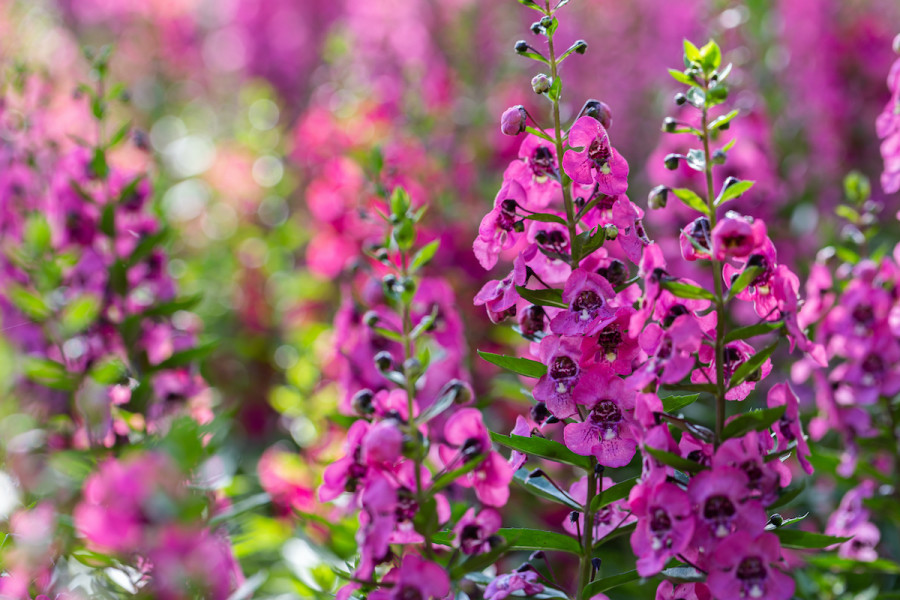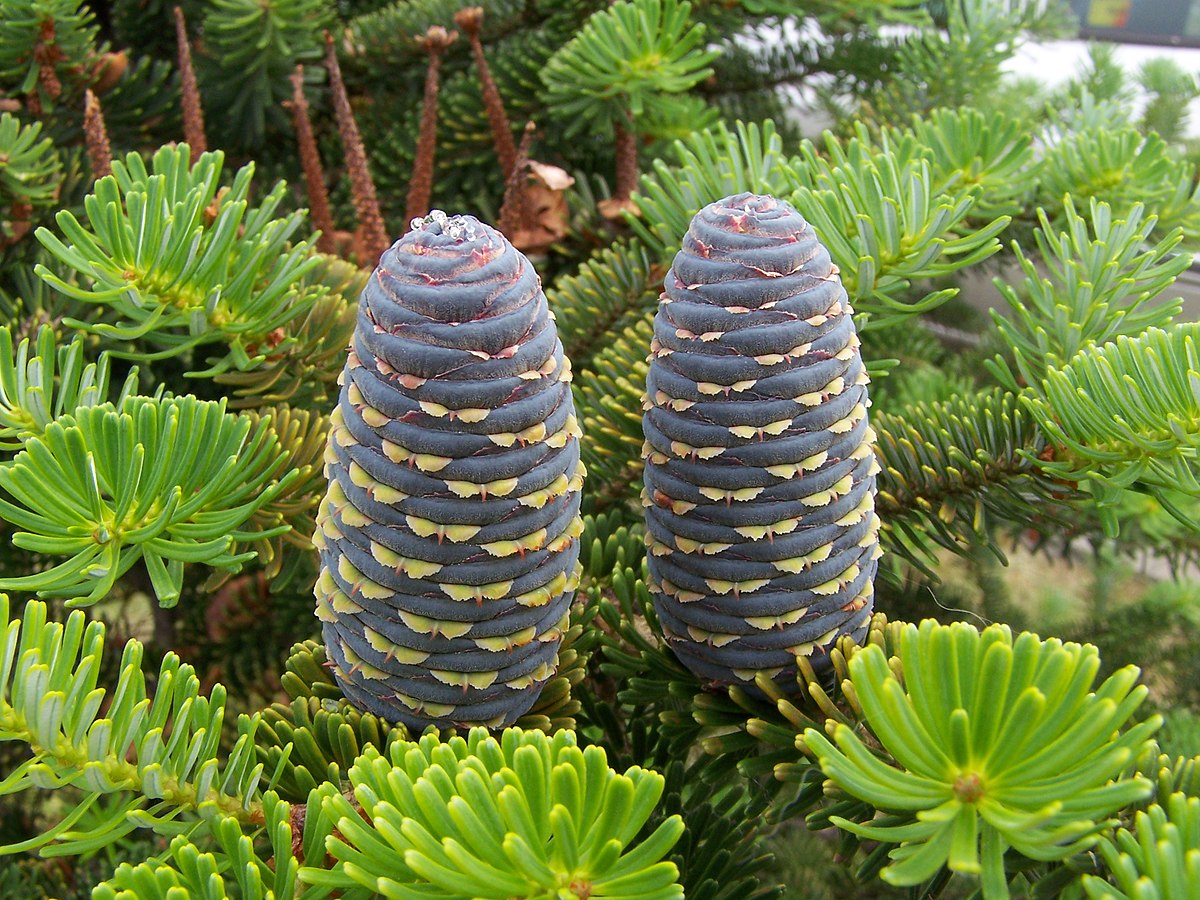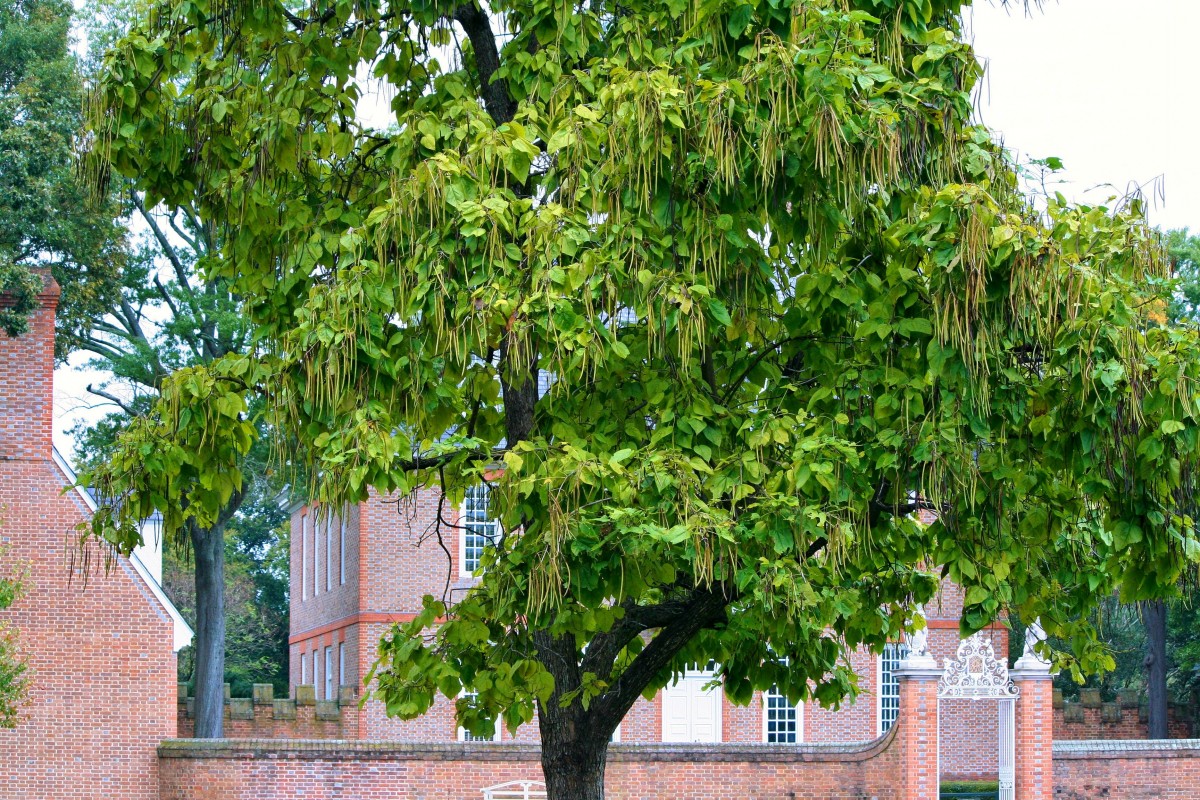Angelonia is a little-known angelic flower named in Caracas, Venezuela, where it was first observed.
Angelonia has erect branches and leaves are lanceolate (lance-shaped), acuminate (finished in a point) and have serrated margins. The inflorescences (the way the flowers are grouped on a plant) are spike-like, erect and bear numerous small-sized flowers that are quite similar to small orchids or dandelions’ mouth flowers.
Angelonia flowers stand out for having a fruity aroma that reminds us of apples and grapes. In addition to the pleasant aroma, the flowers have different colors, the most common being: white, pink, purple, blue and salmon. There are mixed or mixed color flowers.
This plant with delicate and abundant flowers is perfect for the formation of colorful clusters and borders. It does not need pinching (gardening technique that consists of cutting with the tips of the fingers or nails, the apical shoots of a developing plant. This technique stimulates the densification of the plant, giving it a fuller and rounder shape), to form dense clumps, but good weekly fertilization is important for intense flowering.
The Angelonia genus includes only 34 species of herbaceous plants and shrubs, but the gardens are dominated by the narrow-leaved Angelonia angustifolia. This flower is still little known as it was only cultivated in the United States in 1990! Therefore, if you want to surprise your neighbors and friends, then be sure to sit down with angels. Finding Angelonia seedlings in nurseries and shops is still difficult, though possible. Want to learn more? Keep reading!
Scientific Name: Angelonia angustifolia
Popular Names : Angelonia
Family: Plantaginaceae
Category: Annual Flowers
Climate: Continental, Equatorial, Mediterranean, Subtropical, Temperate, Tropical
Origin: Central America, North America, South America, Mexico
Height: 0.4 to 0.6 meters
Brightness : Full Sun
Life Cycle: Annual, Perennial
Angelonia – evergreen plants that can reach a height of 45-55 cm. They have interesting leaves – pointed, toothed, but most importantly, when rubbed, they smell like apples. The flowers can be of different colors: white, pink, lilac, purple, blue. Varieties with bicolored flowers have already been selected. The inflorescences are concentrated in beautiful inflorescences whose length varies from 8 to 20 cm. Angeloni blooms for a month – a month and a half and lasts well, picked and soaked in water – up to 10 days.
In plant resistance zones 9 to 11 (USDA), angelic plants grow as perennials, but in some places, they can be grown as annual flowers.
The Most Beautiful Varieties of Angelonia

- Angelonia Angelface – grows up to 60 cm high, blooms with blue-purple flowers
- Angelonia Serena – grows to 25 – 30 cm in height, can bloom in 5 colors (purple, lavender, blue, pink and white)
- Angelonia Serenita – grows to 20 – 35 cm height, can bloom in raspberry, purple, lavender and white
- Angelonia Sungelonia – grows to 40 cm in height, flowers are bright pink, white and blue.
Growing Characteristics of Angelonia
Angelonia are planted in a sunny location and are moderately watered. Responds well to fertilization. When the flowers bloom, it is advisable to cut the petal.
Angelica Seedlings for Sowing
Angelica seeds are sown in January-February. The seeds are sown shallowly on the surface of the soil and then spread with a thin layer of soil or vermiculite.
Angelica seedlings are planted outdoors in late May or early June as this flower likes warmth.
Cultivation of Angelonias in Pots
Potted Angelonias can be brought home for the winter. Since Angelonias are perennials by nature, they will grow perfectly at home. If you’ve already grown angelonias in a pot, just put the pot inside. And if the Angelonia was grown in a flower garden, carefully dig up the bush and move it into the pot, cutting the plant halfway down.
Also, Angelonia multiplies easily by cuttings (cuttings take root in just 2 weeks), so by next spring you will have more than one Angelonia bush.
There you are! With all those tips you should be ready to grow Angelonias in your garden! What’s your favorite flower so far? Share it with us in the comments below.






1 Comment
[…] best suited to create a large garden. However, they need to be cared for to bring out the style of garden you […]